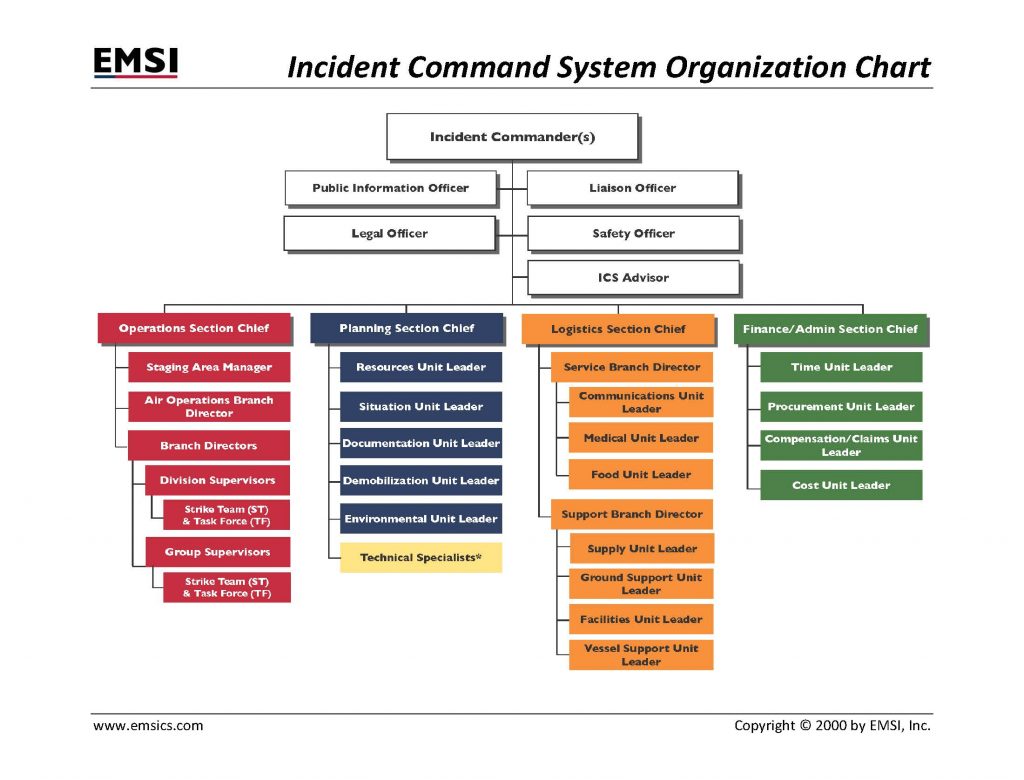

To achieve this, NIMS expanded upon the principles of the ICS.

NIMS was born in the wake of the September 11, 2001, terrorist attacks, which underlined the importance of efficient communication not just between different agencies of the same type (like fire departments), but of entirely separate organizations. federal government developed an even more comprehensive approach to incident management called the National Incident Management System, or NIMS. A new chapter began in the early 2000s, when the U.S. The history of incident response doesn’t end with the ICS. And it establishes a consistent set of terms that stakeholders can use to describe their actions during incident response, which makes it easier to communicate clearly.Īlthough the ICS was initially conceived to fight fires, it became the de facto standard for organizing incident response strategies of all types. It also defines several categories of incident response processes, including operations, planning, logistics and finance. The ICS defines a hierarchy for incident response, with an incident commander at the top. To fix the problem, California fire chiefs developed what became known as the Incident Command System, or ICS. Lacking a clear chain of command and a systematic approach to firefighting, the agencies struggled to deploy their resources effectively and rapidly. It was poor coordination among the various firefighting agencies that responded to blazes.

The Laguna fire of 1970 brought matters to a head and elicited a new approach to incident response for fire agencies.Īfter assessing what was going wrong, the fire chiefs determined that it wasn’t a lack of equipment or personnel. Each year brought blazes worse than the last, with more land burned and more buildings lost. Matters began to change for the better when stakeholders started thinking about better ways to put out fires – literally.īy the 1960s, fire chiefs in California realized that they were struggling to respond effectively to the wildfires that broke out every summer. But the more stakeholders involved, the harder it was to respond quickly and effectively. Historically, organizations may have been able to handle incidents well enough if the incidents required response from only one, small group. Differing approaches to assessing the priority of incidents.Varying organizational structures, which made it hard to identify leaders, coordinate response efforts and delegate tasks.Lack of effective, consistent communication between stakeholders.Response efforts were ad hoc, and their effectiveness owed more than a little to sheer luck. Fires, floods, infrastructure breakdowns and similar crises have been happening for millennia.įor most of history, however, humans lacked an efficient, purposeful way to manage these sorts of incidents. Societies have always had incidents, of course. Historical problems in incident management So, let’s take a look at that history, and examine where modern incident response concepts originated. To understand fully what it means to be an SRE today, you have to appreciate this deep history of incident response.
#History of the incident command system Offline
On the contrary, the ways SREs think about incident response, structure incident management teams and rank the priority of incidents owes much to incident management strategies developed in the offline world decades ago. And that’s a shame, because SREs didn’t invent incident management concepts and strategies on their own. If you’re an SRE, you may be so caught up in the day-to-day work of managing reliability and responding to incidents that you never take time to step back and ask that question. What’s the history of incident management?


 0 kommentar(er)
0 kommentar(er)
